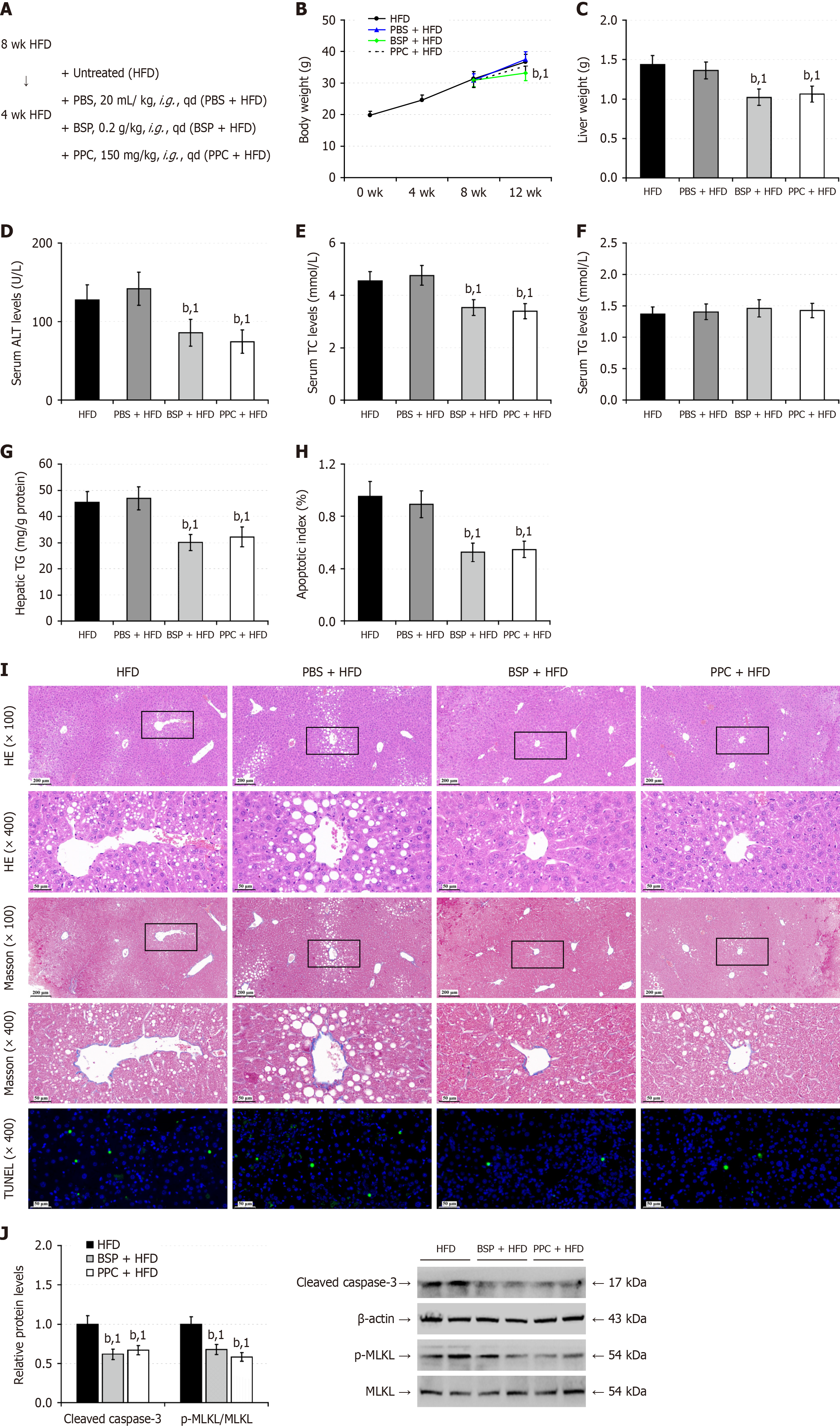Copyright
©The Author(s) 2025.
World J Gastroenterol. Jan 28, 2025; 31(4): 93179
Published online Jan 28, 2025. doi: 10.3748/wjg.v31.i4.93179
Published online Jan 28, 2025. doi: 10.3748/wjg.v31.i4.93179
Figure 5 Treatment with Bletilla striata polysaccharides mitigates the high-fat-diet-induced hepatic steatosis in mice.
A: After being fed with high-fat-diet (HFD) for 8 weeks, the mice were randomized and untreated as the HFD group or treated with phosphate buffer saline (PBS) as the PBS + HFD group, 0.2 g/kg Bletilla striata polysaccharides (BSP) as the BSP + HFD group, or 150 mg/kg polyenylphosphatidylcholine (PPC) as the PPC + HFD group by gavage daily for 4 weeks (n = 12). The mice were continually fed with HFD for another 4 weeks; B: Longitudinal measurements of mouse body weights; C: Liver weights; D: Serum alanine aminotransferase levels; E: Serum total cholesterol levels; F: Serum triglyceride (TG) levels; G: Hepatic TG contents; H: Liver cell apoptotic index; I: Hematoxylin and eosin and Masson staining of liver tissue sections and transferase-mediated deoxyuridine triphosphate-nick end labeling analysis of hepatic cell apoptosis; J: Western blot analysis of the relative levels of apoptosis-, and necroptosis-related protein. Data are representative images or expressed as the mean ± SD of each group of mice from at least three separate experiments. bP < 0.01. 1P < 0.01 vs the high-fat-diet group. PBS: Phosphate buffer saline; ALT: Alanine aminotransferase; TC: Total cholesterol; TG: Triglycerides; HFD: High-fat-diet; BSP: Bletilla striata polysaccharides; HE: Hematoxylin and eosin; MLKL: Mixed lineage kinase domain-like protein; TUNEL: Transferase-mediated deoxyuridine triphosphate-nick end labeling; wk: Week; qd: Quaque die; PPC: Polyenylphosphatidylcholine.
- Citation: He YH, Ou LL, Jiang JL, Chen YF, Abudukeremu A, Xue Y, Mu MY, Zhong WW, Xu DL, Meng XY, Guan YQ. Bletilla striata polysaccharides alleviate metabolic dysfunction-associated steatotic liver disease through enhancing hepatocyte RelA/ HNF1α signaling. World J Gastroenterol 2025; 31(4): 93179
- URL: https://www.wjgnet.com/1007-9327/full/v31/i4/93179.htm
- DOI: https://dx.doi.org/10.3748/wjg.v31.i4.93179









